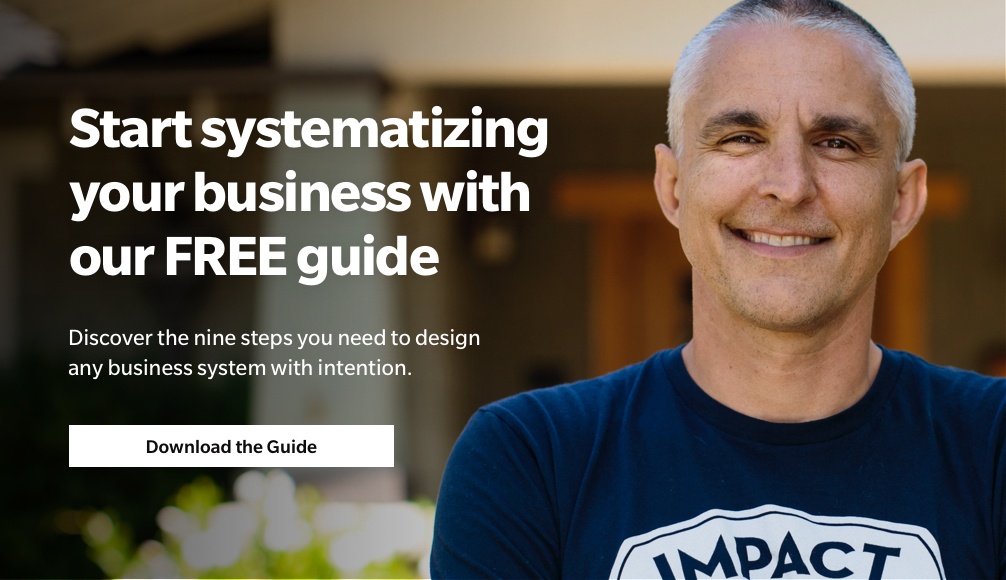When I started as a business coach, my life did not look like it does today. I lived in the city, in a house that was in the middle of a subdivision. I worked for someone else and had never considered myself an entrepreneur. My default vision at the time was that I would continue to build a career for myself inside a good company—one that cared and took care of its employees—until I retired in my dream house, watching grandbabies run about.
Don’t get me wrong; I did dream about what it might be like to be an entrepreneur, just as I saw my father do his entire life. But it was just that—a dream, and not the reality I thought would support me for the rest of my life.
The unexpected outcome today is that the dream house actually came first and the career turned into a small business. Sometimes clarity in one part of your life creates clarity in another part. Holding the intention of my dream house was the catalyst for shifting my life and my career. A different picture from the one I’d originally envisioned, and a different way of getting there; yet it in the end, it turned out perfectly.
Many people ask me how I created my success. What did I do differently that produced results so much faster than I had intended? I believe the key element is writing down your vision; the rest will follow. What do I mean by this? That unless you get your vision out of your head and down on a piece of paper (or a document on your computer screen), you can’t begin to relate to it as if it’s real. Keeping it in your head can also keep you from committing. You can always “change your mind,” right? Even so, it took a coach to help me see that the simple act of writing down what I wanted would actually help to create it.
Now I see the same principle work with my clients every day: Life may not always turn out as they expected, but once they connected with their dream—whether for their business or their life—and then wrote it down, things began to happen.
Success That Felt Like Failure
When I first met Kim, she was operating a marketing business. It was fairly successful but dogged by all the kinds of issues that usually lead clients to seek out a business coach. The business was not sustainable beyond Kim. She wasn’t systemized, had no documentation, and she worked 80 hours a week. The business was financially successful; however, it was slowly becoming a success she didn’t want. The unspoken truth was, Kim felt trapped but didn’t know how to transition to something else.
When I asked her why she’d gotten into this particular business, she said, “I have no idea. I never thought I would ever own a marketing business. It isn’t something I’m excited about, but something that I find myself in.” Like a lot of owners Kim had “backed into” her business almost by accident; she hadn’t consciously chosen or envisioned it.
Kim said she was happy, and probably said it 500 times during our first meeting, but I could tell she wasn’t. She was simply trying to convince herself. She expressed lackluster feelings towards the industry she was in, and she was tired.
When I asked her what really made her happy, she recounted how, as a child, she always imagined herself in the fashion industry. She would play dress-up and put on modeling shows for her family and friends. She created mock stores in her bedroom and invited her sisters to shop and buy things. Listening to her, it was apparent that Kim was a true entrepreneur at heart but was not leading the type of business she felt passionate about. She was simply in an industry that didn’t inspire her.
I invited Kim to momentarily set aside the work we needed to do on her marketing business and asked her to dream with me. I asked her to sit and write a vision that represented what truly inspired her. This wasn’t just a business vision, this was a vision to reimagine the life she truly wanted. I could instantly feel her apprehension at the thought of spending time on anything besides fixing her current situation.
“Shouldn’t I spend every moment I have to work on the needs of my current business?”
“Are you inspired to work on your current business?” I asked.
She said no.
I knew that without the inspiration a new vision could give her, she would never put the time into building a business that was sustainable. At that moment, I asked her, “Do you trust me?”
“Yes.” Her transformation began the moment she began to write.
Kim’s dream became a reality quicker than either of us expected. Together, we worked on a plan to prepare the marketing company for sale at a price that would give her seed money for her new venture. She was delighted to be able to apply the skills we’d developed for her marketing business to building her boutique. She discovered that being an entrepreneur is all about knowing what to do and how to lead any business, no matter what industry you’re in. I was thrilled to witness Kim finally enjoying entrepreneurship. She created her dream business much faster than her first—partly because she’d already learned the skills and had the tools, but most of all, because she had the vision.
The day arrived for the Grand Opening of Kim’s boutique. This time, when she told me she was happy, I believed her.
How Do You Create a Vision?
There are three aspects to visioning that help you create a powerful document that serves as the guide for what your business will look like when it is done:
- A blank sheet of paper and beginner's mind. A vision is a vivid description of what makes you most happy, fulfilled, and excited. Finding your inspiration is a process best supported through mindful time with yourself, your thoughts, and your curiosities. Set aside some time alone to remember what it is that makes you happiest. Like Kim, many people discover it’s something that goes back to childhood when we allowed ourselves the freedom to explore. When you land on it, don’t be surprised if it’s something that has been dormant inside of you for a long time.
- Identify the tangibles and intangibles. Define all the pieces that will make your vision really take shape. For a business vision, what are its products or services? Whom will it serve? Where will it operate or be located? What types of customers and employees do you expect to attract? How much revenue will it produce? For a personal vision, you can create subcategories like health, relationships, possessions, and experiences. How do you want to be spending your time? What impact do you want to have?
- Think it, then ink it. This is where the rubber meets the road. You can only make your vision a reality once you’ve documented it (i.e. write it down!). Otherwise, it will never be grounded and crystal clear to you. Some people like to write it in the form of story, some in lists, and others through a flowchart or vision board. What’s important is that it's out of your head. Whatever feels right to you is the right way.
After all the work that went into fulfilling the dream Kim originally wrote down, she realized business really was fun and exciting. The vision was something she always had inside of her, yet it wasn’t until she put it in writing that she saw how to put that vision together. Achieving it faster and bigger was a surprise bonus that happened through the focus and diligence her vision created.




Comments